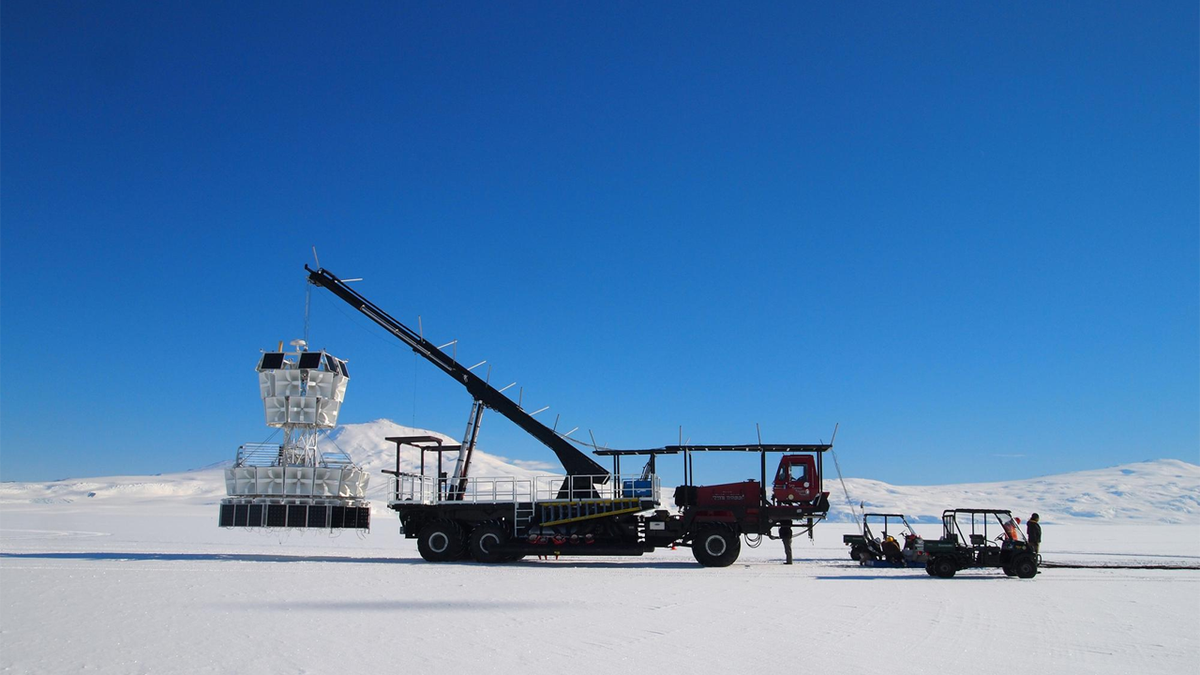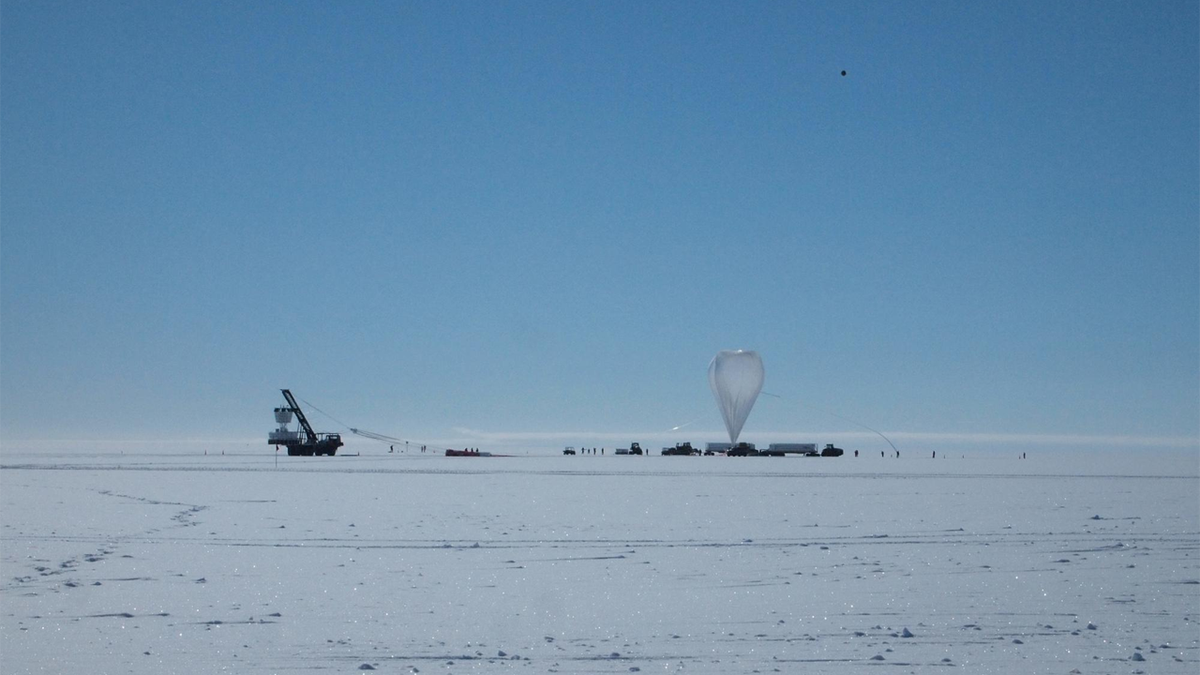NEWYou can now listen to articles from Fox News!
Researchers in Antarctica have detected unusual radio waves coming from beneath the ice.
These mysterious signals were reported in the journal Physical Review Letters and were discovered by the Antarctic Impulsive Transient Antenna (ANITA).
In the experiment, the team studied signals coming to Earth through various instruments.
They used balloons to elevate these instruments high into the atmosphere to enhance their understanding of cosmic events across the universe.
POTENTIAL DISCOVERY OF NEW DWARF PLANET ADDS COMPLEXITY TO PLANET NINE THEORY

The unusual radio pulses were identified by the Antarctic Impulsive Transient Antenna (ANITA), a collection of devices flown on balloons high over Antarctica designed to detect radio waves from cosmic rays striking the atmosphere. Credit: Stephanie Wissel / Penn State (Photo: Stephanie Wissel/ Penn State)
The choice of Antarctica for these experiments was strategic, as it experiences minimal interference from other radio signals.
However, the team found radio waves emanating from beneath the ice instead.
According to Stephanie Wissel, an associate professor of physics, astronomy, and astrophysics at Penn State, they discovered these waves while searching for neutrinos, a type of particle.
NEVER-BEFORE-SEEN PHOTOS REVEAL WWI-ERA SUBMARINE AT 1,300 FEET WHERE 19 SAILORS LOST THEIR LIVES IN 1917

Wissel and worldwide teams have been developing specialized detectors to identify sensitive neutrino signals, even in tiny quantities. A single neutrino signal can provide a wealth of information, making every detection valuable, she noted. (Photo: Stephanie Wissel / Penn State.)
“The detected radio waves were coming in at steep angles, around 30 degrees below the ice surface,” Wissel mentioned in the announcement.
She further explained that these radio waves should not have been detectable at all.
To reach the researchers, the waves would have needed to pass through thousands of kilometers of rock, where they would typically be absorbed.
Wissel added that the team has yet to determine how they were able to detect these neutrinos.

ANITA was positioned in Antarctica to minimize interference from other signals. The balloon-borne radio detector flies above the ice, capturing emissions known as ice showers. Credit: Stephanie Wissel / Penn State.
Wissel stated that neutrinos are crucial for understanding the universe because they are emitted from high-energy sources and are challenging to detect.
According to her, an enormous number of neutrinos could be passing through a person at any time without any interaction.
“This presents a double-edged sword. Detecting them means they have traveled a long way without interacting with anything else. We might be observing a neutrino from the very edge of the observable universe,” Wissel explained.
Once identified, these particles can unveil information about cosmic phenomena that even the most advanced telescopes cannot capture.
According to Wissel, the balloon ascends to about 40 kilometers or 29 miles above the ice to gather emission signals.
However, when they compared their results with two other experiments, they found inconsistencies.
This led them to conclude that their findings were not neutrinos, but rather something else entirely.
Wissel speculated that some theories suggest these findings could relate to dark matter, but this remains unverified and a mystery.
“I suspect some intriguing radio propagation phenomena are occurring near the ice and the horizon that I don’t completely understand, but we have thoroughly explored several possibilities, and have yet to find an explanation,” Wissel remarked.
Nick Butler is a reporter for Fox News Digital. If you have any tips, reach out to Nick.Butler@Fox.com.


